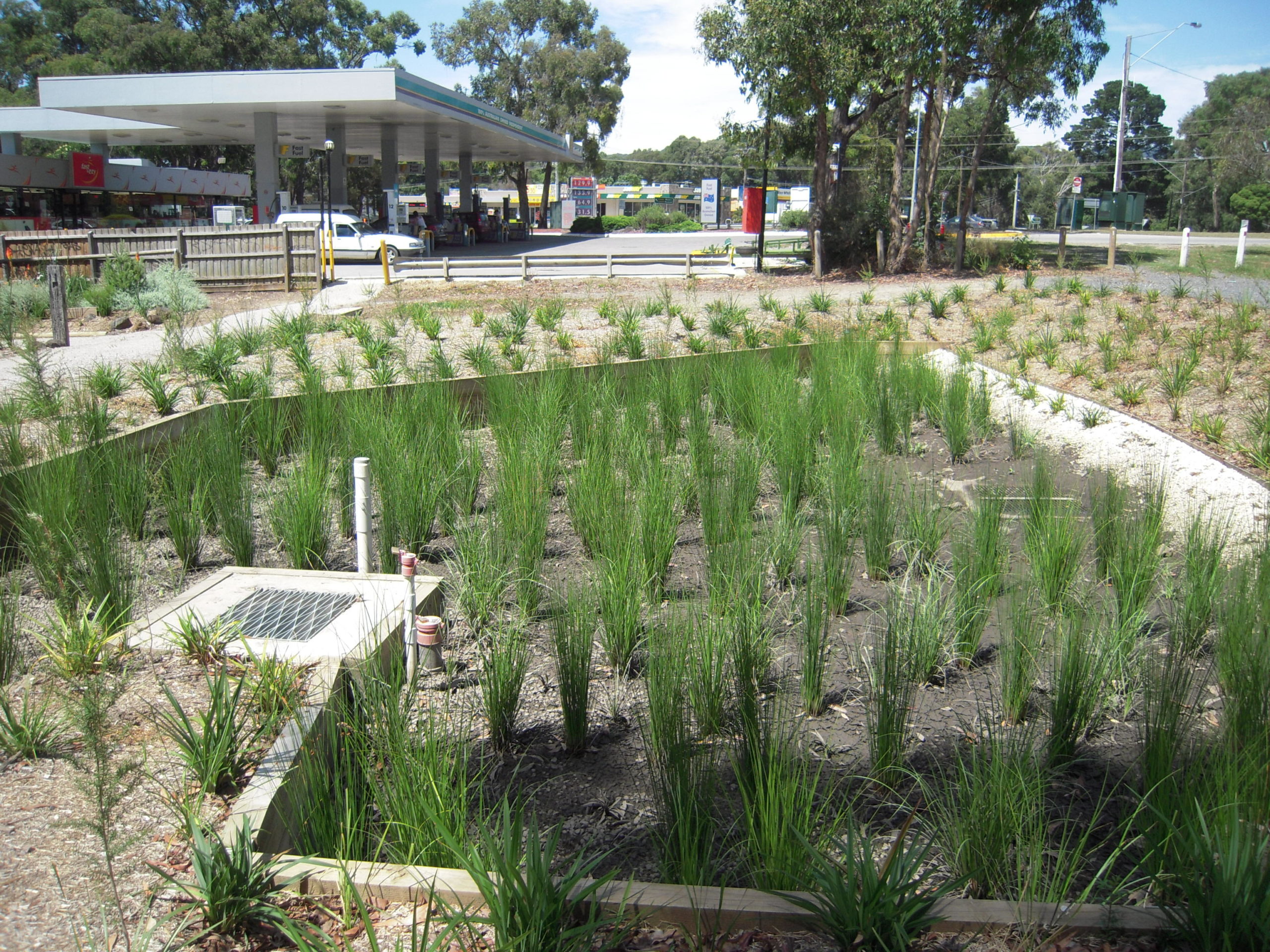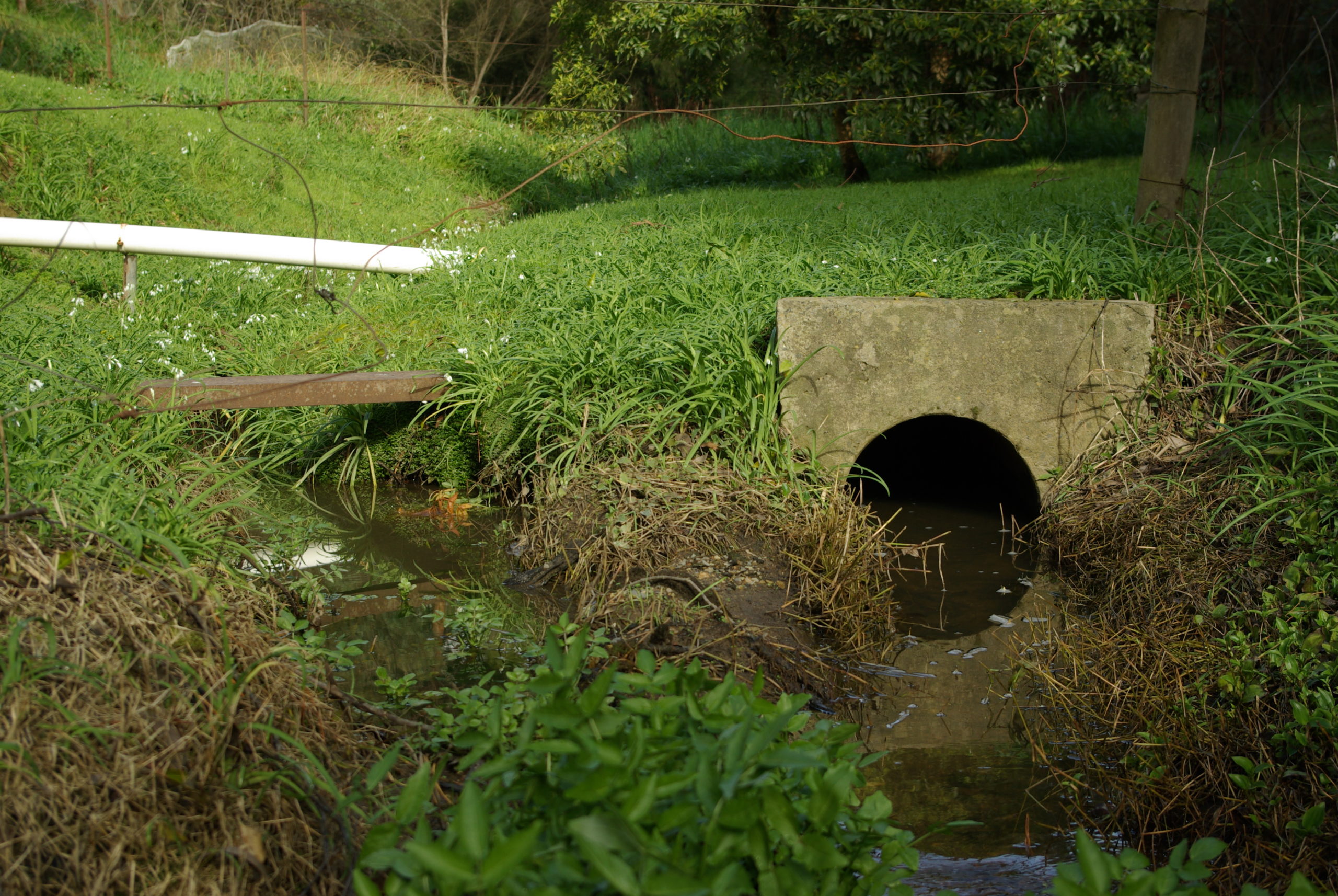Raingardens and rainwater capture tanks can help mitigate the harmful ecological impacts of a warming climate and runoff pollution
22 November 2022

A raingarden constructed near the headwaters of Little Stringybark Creek in Mt. Evelyn, Melbourne, Australia.
Credit: Waterways Ecosystem Research Group, The University of Melbourne
AGU press contact:
Liza Lester, +1 (202) 777-7494, [email protected] (UTC-4 hours)
Contact information for the researchers:
Christopher J. Walsh, School of Ecosystem and Forest Sciences, The University of Melbourne, Victoria, Australia, [email protected] (UTC-9.5 hours)
WASHINGTON — Catching urban runoff in raingardens and rainwater capture tanks improves the water quality of nearby streams and rivers and lowers water temperatures that have risen in the region due to climate change and the urban heat island effect, according to a new report spanning two decades in the greater Melbourne metropolitan area of Australia.
When natural landscapes are replaced with urban infrastructure environments, the temperature of an area also increases, a phenomenon known as the urban heat island effect. As water runs through urban areas with impervious surfaces, it picks up pollutants and heat before discharging into waterways. The compound effects of urban expansion and climate change in the study region have increased the water temperature of nearby streams by as much as 5 degrees Celsius (9 degrees Fahrenheit).
Raingardens and rainwater tanks were able to restore degraded streams by filtering and cooling runoff before it entered the waterway, according to the study in AGU’s Water Resources Research, which publishes original research on the movement and management of Earth’s water. Green stormwater infrastructure reduced the steams’ peak summer temperatures by about 5 degrees Celsius (9 degrees Fahrenheit), effectively counteracting the regional warming.
These catchment systems also filtered runoff from human activities, such as car washing, spilled gasoline, sewage, fertilization and irrigation, and prevented excess nutrients from entering the stream ecosystems.
The study, one of the longest and largest to be completed on green stormwater control measures, found that raingardens and rainwater capture tanks were effective at reducing water temperatures and pollution in nearby streams at least 90% of the year.
“In areas where we had green infrastructure systems in place, we saw significant water quality improvements,” said Christopher Walsh, an ecosystem scientist at the University of Melbourne and lead author of the study.
Reducing heat and pollution
Green stormwater control measures come in many forms and are designed in accordance with the unique layout of each urban area. This study had two designs: raingardens and rainwater capture tanks strategically placed in locations where runoff from roofs and roads could be intercepted.
Raingardens were constructed and filled with high-filtration soils to remove pollutants before municipal runoff flowed into nearby streams. Rainwater capture tanks reduced total runoff and often directed water into neighboring raingardens for filtering before flowing into the streams.
Unlike roofs and roads, soils are porous and are filled with air pockets that can hold water. According to Walsh, on average, only about 10% of the rainwater that landed on soils in the study region flowed into nearby waterways. Soils absorb and distribute most of the water to trees and vegetation. The water that isn’t taken up by plants is filtered and cooled as it slowly flows through the ground towards the stream.

A section of the upper Little Stringybark Creek before green stormwater infrastructure was installed in the area.
Credit: Waterways Ecosystem Research Group, The University of Melbourne
When water temperatures and nutrients are higher than what is typical of a healthy stream, ecosystems can degrade as plants and animals are not adapted to the changing conditions. Excess algal growth and decreased oxygen levels are just two of the potential effects of abnormally warm and nutrient-flooded streams. When left unchecked, these conditions can be fatal for life that depends on the stream for survival. Fishing and recreational activities are popular at the streams examined in the study, and maintaining a healthy stream ecosystem is central to carrying on with these pursuits, Walsh said.
The future of green stormwater control infrastructure
Green stormwater control measures can improve the health of aquatic ecosystems that we depend on. This study covered a lot of ground in both time and space but was limited in infrastructure development due to incompatibilities with current municipal layouts.
“An existing urban area is very difficult to retrofit,” Walsh said. “If you are able have enough [raingardens and rainwater tanks] in an area that’s not already urbanized, you should be able to protect streams and their water quality.”
###
Contributed by Kirsten Steinke
###
AGU (www.agu.org) is a global community supporting more than half a million advocates and professionals in Earth and space sciences. Through broad and inclusive partnerships, AGU aims to advance discovery and solution science that accelerate knowledge and create solutions that are ethical, unbiased and respectful of communities and their values. Our programs include serving as a scholarly publisher, convening virtual and in-person events and providing career support. We live our values in everything we do, such as our net zero energy renovated building in Washington, D.C. and our Ethics and Equity Center, which fosters a diverse and inclusive geoscience community to ensure responsible conduct.
Notes for Journalists:
This study is published in Water Resources Research with open access. Neither the paper nor this press release is under embargo. Download a PDF copy of the paper here.
Paper title:
“Dispersed Urban-Stormwater Control Improved Stream Water Quality in a Catchment-Scale Experiment”
Authors:
- Christopher J. Walsh, (corresponding author), School of Ecosystem and Forest Sciences, The University of Melbourne, Victoria, Australia
- Moss Imberger, School of Ecosystem and Forest Sciences, The University of Melbourne, Victoria, Australia
- Matthew J. Burns, School of Ecosystem and Forest Sciences, The University of Melbourne, Victoria, Australia
- Darren G. Bos, School of Ecosystem and Forest Sciences, The University of Melbourne, Victoria, Australia
- Tim D. Fletcher, School of Ecosystem and Forest Sciences, The University of Melbourne, Victoria, Australia